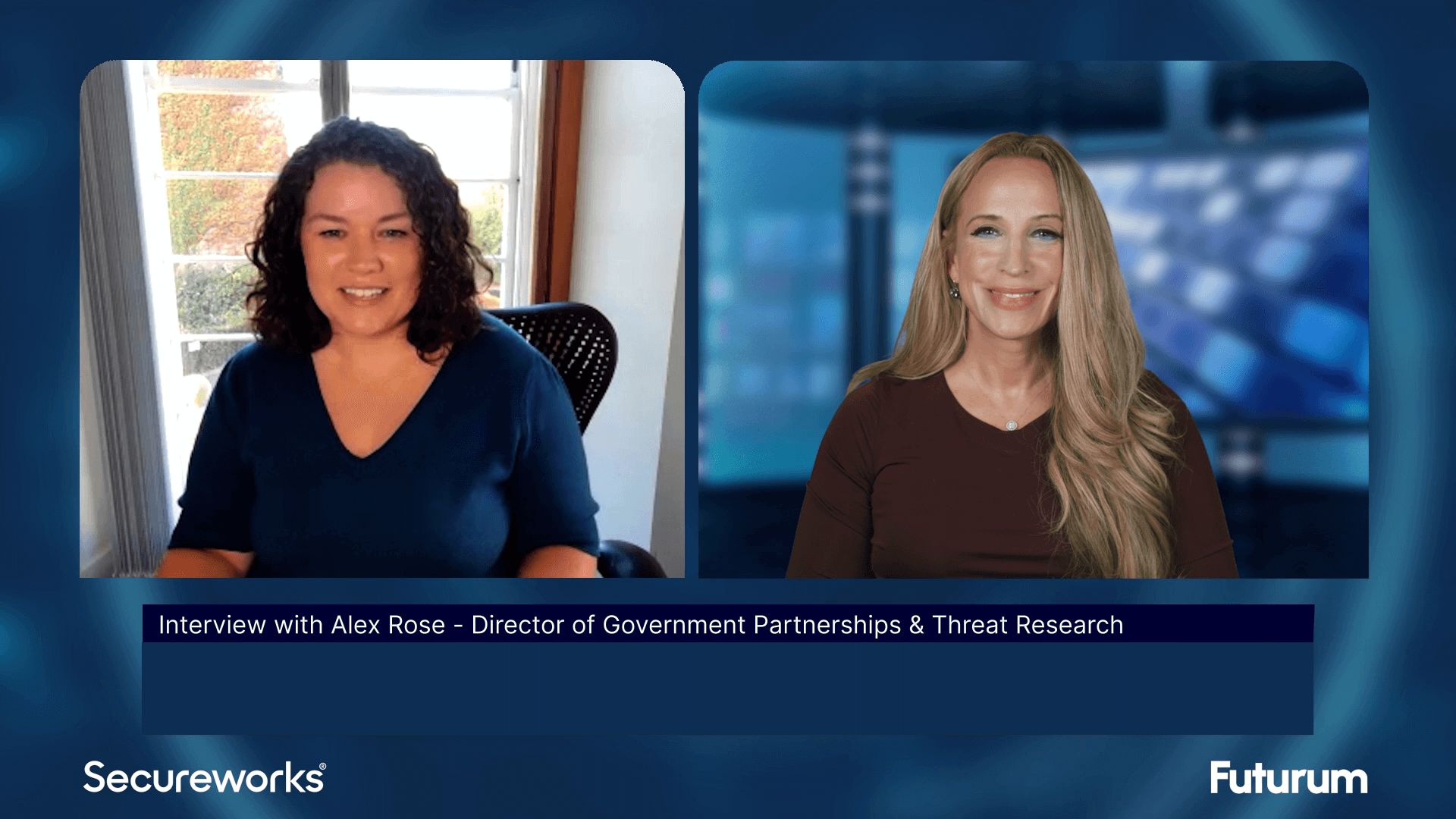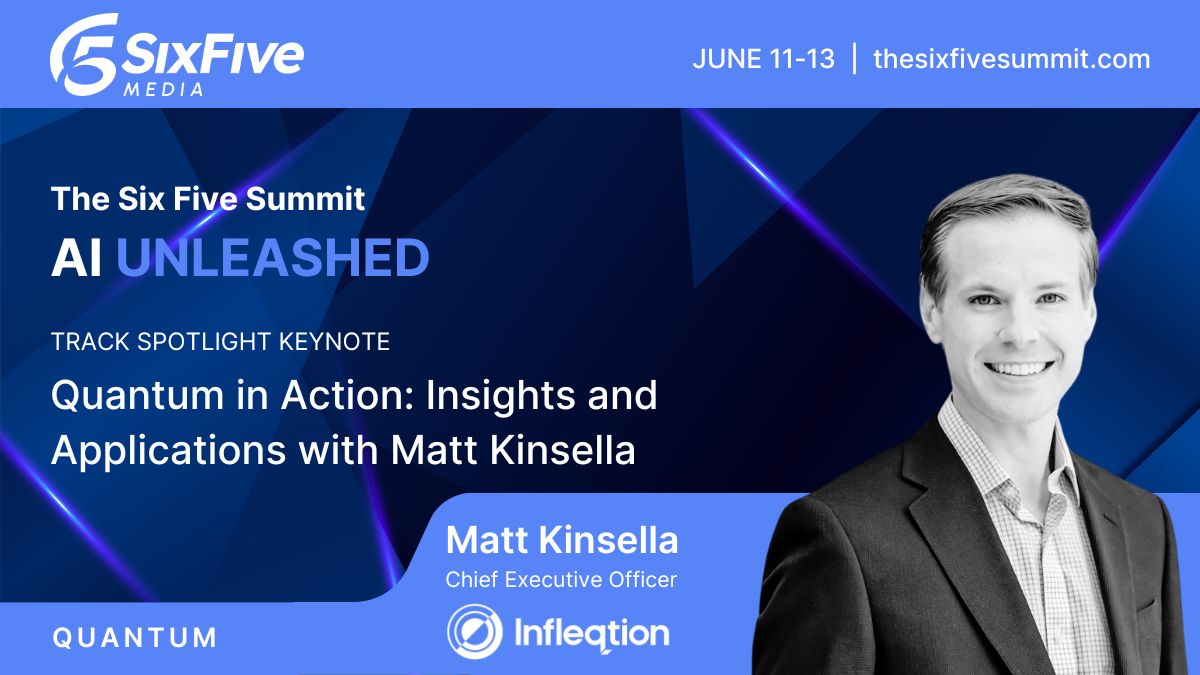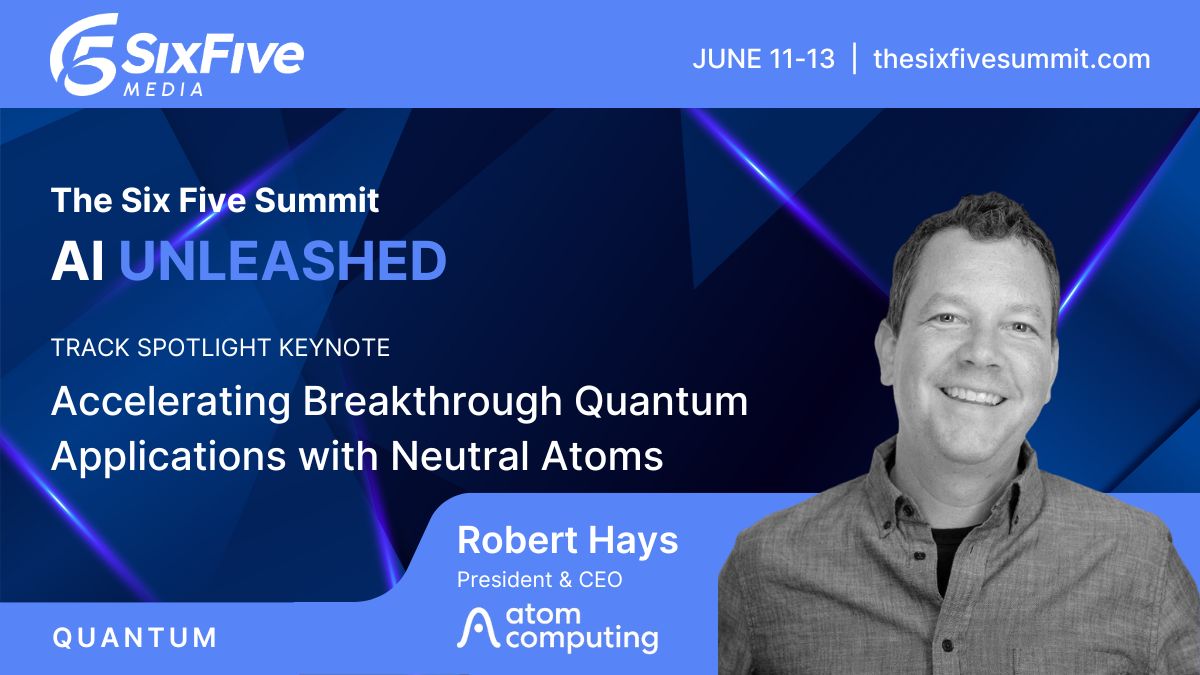Network Evolution for Business Model Innovation
Razvan Teslaru and Freddie Södergren join Will Townsend to explore the impact of AI and 5G on the telecom sector, discussing the global 5G build-out, Ericsson's programming network, and the future of mobile markets.
5G is shifting into high gear! ⚡️ Join Will Townsend at Mobile World Congress 2025 as he sits down with Ericsson’s Freddie Södergren, Head of Technology & Strategy for Business Area Networks, and Razvan Teslaru, Head of Strategy & Portfolio for Business Area Cloud Software and Services to discuss the latest advancements in 5G standalone networks, and the transformative potential of network programmability.
Key takeaways include:
🔹Standalone 5G is taking off: With deployments gaining momentum globally, 5G is poised to deliver on its promise of differentiated services and exciting new business opportunities.
🔹Networks are becoming smarter: Ericsson is leading the charge in making networks high-performing and programmable, using AI to optimize performance, automate tasks, and enable self-healing capabilities.
🔹AI-RAN is the future: AI is no longer just for user applications; it's becoming an integral part of the network itself, paving the way for more efficient, autonomous, and intelligent networks.
🔹Network slicing is unlocking new revenue: Imagine telcos offering customized network slices tailored to specific needs – that's the power of network slicing, and it's opening up exciting new monetization opportunities. Learn more at Ericsson. Watch the full video above, and be sure to subscribe to our YouTube channel, so you never miss an episode.
Will Townsend:
This is Six Five Media On The Road at Mobile World Congress, Barcelona 2025. I'm Will Townsend and I'm spending time with Ericsson today. Freddie and Razvan, welcome.
Freddie Södergren:
Thank you.
Will Townsend:
Yeah, I'm looking forward to a very spirited conversation. And I want to start off talking about standalone. Right. So 5G presented this challenge with allowing the RAN to be updated first via 5G and then eventually the core infrastructure. That's created some challenges. I mean, in standalone, marrying that 5G core and the 5G RAN really will unlock the true promise of 5G. So, Razvan, let's start with you. Where are we at in the build out of standalone today?
Razvan Teslaru:
So I think, as you say, right, 5G standalone is really the starting point for scalable differentiation and for differentiated connectivity, right.
Razvan Teslaru:
And I think we see a lot of great momentum. I think we're about 62 live 5G standalone networks today. I think there's a lot of momentum building. I think there's differences maybe, of course, across regions as well. North America and East Asia and also the Gulf countries are really, you know, front runners. But I think we're seeing good momentum building up in Europe as well.
Will Townsend:
Freddie, do any particular deployment stand out to you? I mean, for me, I live in the United States. T Mobile, obviously, you know, a huge leader in deploying standalone, but what about other parts of the world?
Freddie Södergren:
Yeah. So us, of course, the US is one of the frontrunners in many ways. South Korea was one of the first ones to really deploy 5G at scale. And of course that's also now starting to see:
what can we do with that network? What's the next phase? India is an amazing story.
Will Townsend:
Reliance. I just spent some time with them this week as well.
Freddie Södergren:
Right, exactly. Both Reliance and Bharti Airtel have built what I would consider world class networks in a very short amount of time. And the fact that you can go to India now and experience high speed 5G and also back to the point of standalone, we also start to see innovation happening beyond just mobile broadband in India. So definitely a country to look after.
Will Townsend:
Well, these G’s are about a decade in duration, right? So we're 2025, it's half time in a US football match or maybe a second period in a traditional football match in Europe. But what's next? I mean there's coverage, there's capacity, but what's next for 5G advanced?
Freddie Södergren:
Right, so at Ericsson we talk a lot about making networks high performing and programmable. And for us the high performing part of course is making sure we have sufficient coverage capacity on all bands to be able to deliver the right performance where needed. On top of that, we then bring the programmability and the programmability for us has three components. It's making the network service aware, meaning the network should know what users and what traffic is being carried. It should also know what are the requirements for that specific user or that specific service and be able to dynamically adjust the network, reconfigure the network based on those parameters. So that's the service aware part. Then, very linked to that is also making the network intent driven, which again it's telling the network the outcome you want, not setting the specific parameters on every site. And then the third component is really AI powered, adding the power of AI both in how we do that service differentiation in a smarter way, but also in how we take steps towards autonomous networks, automating and reducing the cost. So that's really what we are seeing now happening. And we have made some very interesting announcements on 5G Advanced, which is really how we take the next step towards a programmable network from a software standpoint.
Will Townsend:
And what are your thoughts on this whole notion of AI-RAN?
Freddie Södergren:
Yeah, so AI-RAN as a general concept is of course, number one, how can we use AI to improve the performance of the networks and also to increase the level of automation. That's something (as an industry) we have worked on for quite some time. But we are really seeing some great steps forward this year. Then of course also with the Gen AI boom, we need to build networks to carry our AI traffic and to be able to tailor the services for AI use cases in a better way. So getting networks ready for AI to scale. I think here we're still early days, but there's a lot of great ideas. And then thirdly, as we look really into the future, we need to figure out how AI workloads and networking workloads will coexist in the same network, which is very much what we have been talking about for a while, which is a horizontal architecture where we have one common compute platform on top of which you can run any workload. So I think the vision and the direction for AI-RAN is very exciting. And of course we also now work in the AI-RAN alliance to take these ideas into implementation.
Will Townsend:
Razvan, let's talk a little bit about network slicing, because I think that's an opportunity with 5G standalone networks. We've been talking about slicing for years now. What's your perspective? I mean, are we going to start seeing T Mobile in the US as a T priority, which is a dedicated slice for first responders? They have a security slice that augments their SASE solution. What are you seeing in other parts of the world from a slicing perspective?
Razvan Teslaru:
I think, as you mentioned, slicing is here and I think a lot of operators are seeing existing use cases and launching slices already today. I think a key challenge is also how to do that in a scalable way and how to manage the complexity that introduces. And I think, Freddie, you talked about intent management and I think for us that's key. Right. Because the more networks become programmable, the more you are able to manage through intent and not through configurations. Of course, specifying what needs to be done and then letting the next layer figure out how that should be done. That means that we're fully embracing the concept of autonomous networks, self healing, self optimizing networks. And obviously that is a journey to a fully closed loop automation, which is of course the only way to manage the complexity ahead.
Will Townsend:
Right. So Freddie, from a program. So Freddie, from a programmability standpoint, obviously there's a monetization opportunity for communication service providers. Right. Traditionally there's been huge challenges in monetizing things beyond access. So can you speak a little bit about that opportunity tied to programmability? Ericsson is really leading the charge with this new joint venture. You brought a lot of partners and ecosystem participants into that, but would love to hear your perspective on all that.
Freddie Södergren:
Sure. So the monetization angle really comes in a few different flavors. We have single operators deploying slices for enterprise use cases, or we have seen some broadcasting point of sale terminals and so on. Very interesting single operator enterprise deployments. I think we're going to see much more of that. It's a very exciting opportunity. Very near term opportunity. But what we also bring with both the API exposure and the Aduna Aggregation and service platform is really taking the next step. It's also how do we bring not just connectivity but other capabilities to market, but also how do we make these capabilities available on a global level, standardized, available to developers. And I think the best way to look at it is really how do we bring 5 billion connected subscribers to developers with one interface? That's the vision.
Will Townsend:
Sure. You know, the GSMA Open Gateway has been instrumental in driving standardization. Right. You know, and I liken the telecommunications industry to one of these “old school” it's sort of an American term. But they're set in their ways. Right. And it's difficult for them to move beyond those kinds of habits. But at the end of the day, given the billions of euros and dollars that are spent on infrastructure deployment and the same that's spent on Spectrum, it's sometimes a dicey proposition to open up your network. Right. So, Razan, do you have any additional thoughts on the whole notion of programmability and the value that it can bring to the market?
Razvan Teslaru:
No, absolutely. I think you mentioned, I mean, I think, you know, the key to growth is obviously innovation. And the key to innovation is obviously a robust, healthy and open ecosystem. And I think we're working a lot on that. And we mentioned Aduna, but also the work that we're doing in terms of intelligent automation platform and our service management and orchestration, which obviously is built on open RAN technology.
Will Townsend:
Sure.
Razvan Teslaru:
Which means that it's now, you know, it's open and it's a very robust ecosystem being developed. On top of that, I think the latest number is off the top of my head, 1400 developers are already onboarded. I think it's 55 companies already developing applications. And it's a real example of how a robust, healthy ecosystem of developers and innovation is already emerging.
Will Townsend:
I'm glad you touched on open, because that drives scale. Right. When you can provide an open set of APIs, you can offer open hardware. Ericsson's been very bullish on this and it just drives more value. I mean, when you have more participants in an ecosystem, the bar of innovation goes up, from my perspective. But it's not an easy endeavor. At the same time, it's exciting. There are a lot of opportunities, but the challenge is in the deployment. So I'm wondering, Freddie, if you can comment on how is Ericsson sort of approaching this to deliver an optimized platform to drive the best subscriber experience and do all of that with a zero touch provisioning mentality?
Freddie Södergren:
So when it comes to the architecture, we're heading into which very much comes from the Oran alliance and the layered architecture or horizontal architecture. The way that we think about the future is we will introduce automation and powered by AI in multiple layers on top of each other. We build real time automation and AI in the RAN layer, some of it executing on the radio itself, some executing on the RAN compute at the site. And of course these are the type of features that have the most latency or time sensitive characteristics. Then we build, as Razvan was alluding to, the service management and orchestration layer, where we then have standard interfaces allowing our customers to develop their own platform for automating and orchestrating both the radio access network, but also the full network across all the domains. And I think the whole notion of flipping the model from this vertical model where we go into one part of the network, geographically speaking, and kind of do everything end to end, to a model where we optimize every layer separately based on open interfaces, we allow innovation in each layer. At the end of the day, I think that's what's really going to bring autonomous networks to reality.
Will Townsend:
Sure. So Razvan, I'm going to go a little off topic here, but I know you can answer this. So Freddie was talking about automation and there's a lot of buzz around agentic AI and how Agentic AI can facilitate that. How do you see Agentic AI factoring into all of this automation?
Will Townsend:
Sure. So, Razvan, I'm going to go a little bit off topic here, but Freddie touched on automation and certainly Agentic AI can facilitate a lot of that. What are some of your thoughts on how Agentic AI can really drive the whole automation front?
Razvan Teslaru:
Absolutely. And I think the horizontal architecture that you were talking about, Freddie, is a fundamentalenabler for that Agentic AI framework to emerge. The more when you horizontalize the network:
I take the business layer as an example, which is a great fit with large language models. For example, enabling you to express a business intent in a natural language and then having that translated into intents that are being consumed and actuated in the lower layers of the stack. I think AI (for us) plays a role in every layer, in the business layer, in the service layer and in the resource layer. And it's being enabled by the fact that the architecture is horizontal and it's independent in that sense. And then you can apply the right Agentic AI approach at each layer in the framework. The decoupling of the layers and the programmability of it and the management of AI intent is what makes it possible for us.
Will Townsend:
We live in exciting times. I mean, I think modern AI, you know, when you compare it to cloudification, I mean, it's a force multiplier, you know, possibly 10x over the cloud. It's just fun to be living, you know, breathing and experiencing this. And certainly Ericsson is an innovator. So I want to thank both of you. It's been a very, very engaging conversation and I just want to thank our viewers for tuning in. This has been Six Five Media On The Road at Mobile World Congress Barcelona 2025. We encourage you to tune in to a lot of other content that'll be streaming throughout the event. Thanks again, gentlemen.
Other Categories
CYBERSECURITY

Threat Intelligence: Insights on Cybersecurity from Secureworks
Alex Rose from Secureworks joins Shira Rubinoff on the Cybersphere to share his insights on the critical role of threat intelligence in modern cybersecurity efforts, underscoring the importance of proactive, intelligence-driven defense mechanisms.
quantum

Quantum in Action: Insights and Applications with Matt Kinsella
Quantum is no longer a technology of the future; the quantum opportunity is here now. During this keynote conversation, Infleqtion CEO, Matt Kinsella will explore the latest quantum developments and how organizations can best leverage quantum to their advantage.

Accelerating Breakthrough Quantum Applications with Neutral Atoms
Our planet needs major breakthroughs for a more sustainable future and quantum computing promises to provide a path to new solutions in a variety of industry segments. This talk will explore what it takes for quantum computers to be able to solve these significant computational challenges, and will show that the timeline to addressing valuable applications may be sooner than previously thought.







